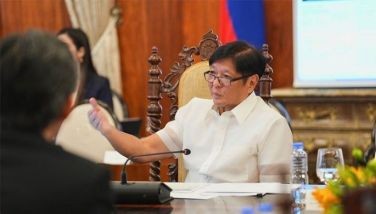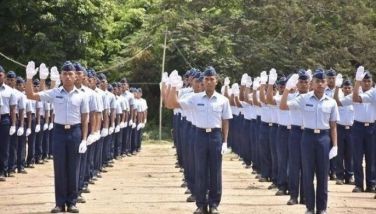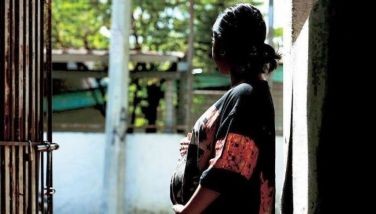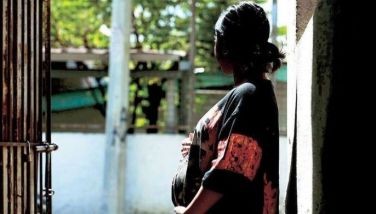Protocol for Trump in Asia means no insults, no surprises
November 2, 2017 | 11:52am
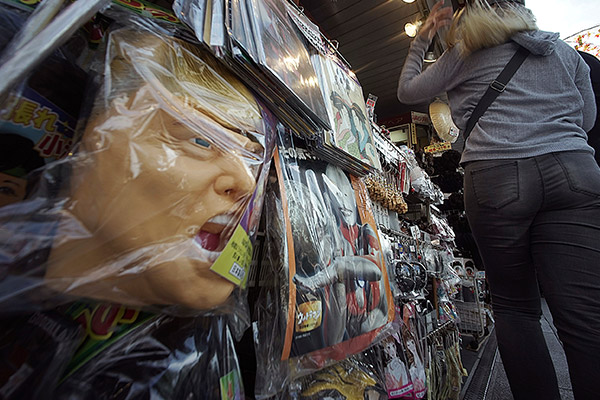
Some rubber masks including of U.S. President Donald Trump are sold in Tokyo Thursday, Nov. 2, 2017. During his first months as president, Trump, who will visit Japan, South Korea and China before attending regional summits in Vietnam and the Philippines, has blended moments of flattery with vows to rip up trade deals, destroy a sovereign nation with nuclear weapons and generally crash long-standing norms of diplomacy anywhere it suits his aims. AP Photo/Eugene Hoshiko
WASHINGTON — When in Asia, make sure handshakes aren't too long—or short. Don't bobble names or titles. Stifle the critical tweets and don't question the food.
These key points of etiquette and protocol are part of the region's core culture known as "face"—keeping yours, helping others save theirs. And they are in many ways the opposite of President Donald Trump's impulsive, in-your-face style.
Trump departs Friday on a 10-day visit to Japan, South Korea, China, Vietnam and the Philippines. He'll be toting a hefty economic and national security policy agenda, and—like any president—high stakes for his own standing on the global stage.
But before anyone gets to policy, there is protocol—the application of rules, etiquette and cultural norms for meetings between dignitaries. How are rooms set up? Are titles correct on the place cards? Who is sitting next to whom?
And for the US president, which forms of American informality—pointing at someone with the index finger, for example—are deeply frowned upon?
"One of the things with protocol is obviously to do no harm," Sean P. Lawler, Trump's nominee to be to be US chief of protocol, said Wednesday before the Senate panel considering his confirmation. As the director of visits and diplomacy for the National Security Council, he will accompany Trump on the trip.
"One of my goals right off the bat," Lawler added, is to "set the stage for diplomacy for the president."
Protocol, an ancient discipline, is aimed at preventing surprises and embarrassment through careful planning and choreography.
"We are the bridge," said Capricia Marshall, President Barack Obama's chief of protocol from 2009 to 2013.
Protocol experts say American informality frequently gets lost in translation in the traditional cultures Trump will be visiting.
On Wednesday, Trump showed signs of understanding the sensitivity. Even as he complained during a Cabinet meeting about "bad" trade deals and deficits, including with China, Trump was restrained.
"I don't want to embarrass anybody four days before I land in China," Trump said—before adding: "But it's horrible."
Among the challenges Trump faces as he heads to Asia are the complexities of the "Asian face," a concept that's foreign to many Americans but lies at the foundation of societies across the region.
Generally, it means making sure behavior, posture, gestures, remarks and more do not spark strong negative emotions in others, or oneself.
So, for example, Trump's 19 seconds of shaking, patting and yanking the hand of Japan's leader at the White House in February crossed all kinds of cultural lines. Prime Minister Shinzo Abe responded with an on-camera eye roll as Trump looked away. Trump is playing golf with Abe during the trip, according to White House officials.
Names and titles are important in Asia.
In July, the Trump White House issued a news release that called Chinese President Xi Jinping the leader of "the Republic of China." Xi is the president of the People's Republic of China. Taiwan calls itself the Republic of China. China said it received an apology from the US.
Then there's Trump's fondness for using Twitter to respond to comments he doesn't like—"bing, bing, bing," as he told Fox Business Network this month. In Asia, doing that in real time could offend the region's cultural aversion to confrontation.
"I think you will find that they are very sensitive to slights," said Georgetown University Professor Dennis Wilder, who formerly served on the National Security Council. He cautions Trump against "any kind of tweeting" that would criticize the leader of a country he's in. "I think this can go well, but he just needs to understand that 'face' in East Asian cultures is terribly important and he needs to make sure that he gives 'face' to the other leaders."
Particularly in China, a breach of protocol can affect the content of the meeting, according to Peter Selfridge, the most recent holder of the chief of protocol post, from 2013 to Trump's inauguration in January.
"The Chinese appreciate precision when it comes to formal diplomatic engagements," said Selfridge. "Americans certainly welcome this as well, but are perhaps more accepting of improvisation and can even use it to their advantage."
Trump wouldn't be the first US leader to commit a protocol faux pas in Asia.
In 2014, local bloggers huffed that Obama looked like an "idler" or a "rapper" when he turned down a chauffeured ride to the Asia Pacific Economic Conference in Beijing and arrived in his own, more-secure presidential limo—chewing gum—as he was known to do to fight nicotine cravings.
Trump might consider advice from his predecessors if he finds he is served something other than his favorite steak with ketchup.
Richard Nixon, the first president to open the diplomatic door to China, advised Ronald Reagan on a 1984 trip there: Don't ask about the food, just swallow it.
"Still, I had difficulty identifying several items on my plate that first night," Reagan wrote in his memoirs, "so I stirred them around in hopes of camouflaging my reluctance to eat them."
BrandSpace Articles
<
>
- Latest
- Trending
Trending
Latest
Trending
Latest
Recommended
















